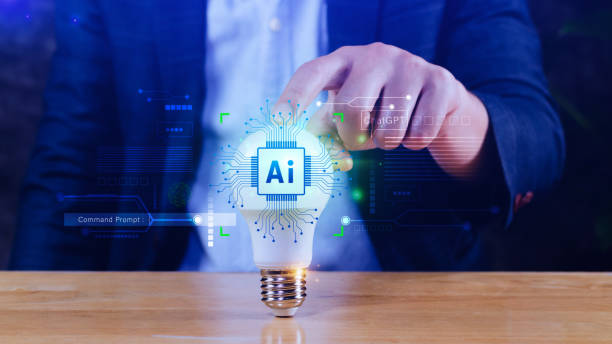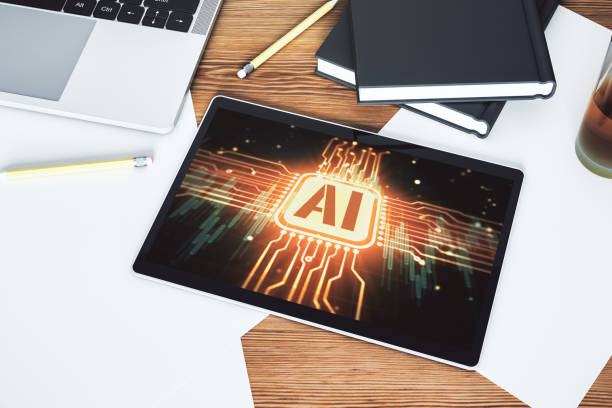What is Artificial Intelligence and how does it work?

What is Artificial Intelligence and how does it work?
Artificial Intelligence or Artificial Intelligence (AI) generally refers to the ability of a computer system to perform tasks that typically require human intelligence.
These tasks include learning, reasoning, problem-solving, natural language understanding, and pattern recognition.
AI attempts to simulate these processes in the form of algorithms and mathematical models.
AI identifies patterns and relationships in data using large datasets and complex algorithms.
These patterns are then used for prediction, decision-making, and problem-solving.
The learning process in AI is divided into two main categories: supervised learning and unsupervised learning.
In supervised learning, the system is trained using labeled data, while in unsupervised learning, the system searches for patterns in unlabeled data.
AI is a broad field that includes several sub-branches such as machine learning, natural language processing, computer vision, and robotics.
Each of these sub-branches addresses specific aspects of AI and has applications in various fields.
#Machine_Learning is one of the most important sub-branches of AI, enabling systems to learn from data without explicit programming.
In summary, AI is a powerful tool that can help us solve complex problems and improve efficiency in various fields.
However, understanding how it works and its applications is essential for effective utilization of this technology.
Did you know that poor online store design can drive away up to 70% of your potential customers? Rasaweb transforms your sales with professional and user-friendly e-commerce website designs.
✅ Significant increase in sales and revenue
✅ Full optimization for search engines and mobile
⚡ [Get free consultation from Rasaweb]
Types of Artificial Intelligence: From Simple Systems to General Intelligence

Types of Artificial Intelligence: From Simple Systems to General Intelligence
Artificial intelligence can be divided into different categories based on their capabilities and functionalities.
One of the most common classifications is based on the level of intelligence of the systems.
In this classification, we encounter three main types of artificial intelligence.
Narrow AI (Weak AI) This type of artificial intelligence is designed to perform a specific task.
These systems are very skilled at performing their tasks but cannot perform other tasks.
Examples of this type of AI include face recognition systems, product recommendation systems, and voice assistants like Siri and Alexa.
General AI (Strong AI) This type of artificial intelligence has the ability to perform any task that a human can.
These systems can learn, reason, and solve problems, just like a human.
General artificial intelligence is still in the development stages, and no complete system capable of reaching this level of intelligence exists yet.
Super AI This type of artificial intelligence goes beyond human intelligence.
Systems with super artificial intelligence can surpass human intelligence and capabilities, solving problems much faster and with higher accuracy.
This type of artificial intelligence is still a hypothetical concept and does not currently exist.
In addition to these classifications, artificial intelligence can also be categorized based on its functionality and learning methods.
For example, machine learning, deep learning, and neural networks are among the common methods used in developing AI systems.
Understanding these classifications helps us better comprehend what artificial intelligence is and what capabilities it possesses.
Applications of Artificial Intelligence in Daily Life and Various Industries

Applications of Artificial Intelligence in Daily Life and Various Industries
Artificial intelligence is increasingly permeating daily life and various industries, offering diverse applications.
From improving online shopping experiences to diagnosing diseases, AI is changing how we live and work.
In daily life AI is used in voice assistants like Siri and Alexa, movie and music recommendation systems, spam filtering, and face recognition in smartphones.
These systems, by analyzing data and patterns, help us lead easier and more efficient lives.
In the medical industry AI can be employed in disease diagnosis, drug development, and providing personalized healthcare.
Intelligent systems can analyze medical images and detect signs of disease with higher accuracy.
Furthermore, AI can play a crucial role in developing new drugs and improving treatment methods.
In the transportation industry self-driving cars, traffic management systems, and route optimization are among AI applications.
These systems can make transportation safer and faster by reducing accidents and improving efficiency.
In the financial industry AI is used in fraud detection, risk management, and providing personalized financial services.
Intelligent systems can identify unusual patterns in financial transactions and prevent fraud.
In the manufacturing industry AI is applied in process automation, quality control, and predicting equipment failures.
These systems can optimize production by increasing productivity and reducing costs.
These are just a few examples of the widespread applications of artificial intelligence.
With technological advancements, AI applications are expected to become more widespread and complex in the future.
The table below shows examples of AI use in marketing:
| AI Application in Marketing | Description |
|---|---|
| Data analysis and customer behavior prediction | Identifying patterns in customer data to provide personalized recommendations |
| Marketing automation | Sending automated emails, social media management, and ad optimization |
| Chatbots and customer support | Providing quick and accurate answers to customer questions |
| SEO Optimization | Keyword analysis, content optimization, and website ranking |
Machine Learning: The Beating Heart of Artificial Intelligence
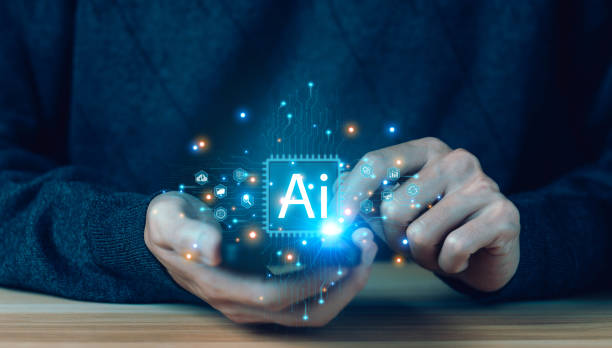
Machine Learning: The Beating Heart of Artificial Intelligence
Machine Learning (Machine Learning) is one of the most important and widely used sub-branches of artificial intelligence that enables systems to learn from data without explicit programming.
In fact, instead of giving precise instructions to systems, machine learning allows them to identify patterns and relationships by analyzing data and make decisions based on them.
Machine learning is divided into three main categories: supervised learning, unsupervised learning, and reinforcement learning.
Supervised Learning In this method, the system is trained using labeled data.
This means that each data sample has a label indicating the correct answer.
The system learns how to predict the correct answer based on data features by examining this data.
Examples of this type of learning include face recognition, spam detection, and stock price prediction.
Unsupervised Learning In this method, the system is trained using unlabeled data.
This means the system must automatically identify patterns and relationships in the data.
Examples of this type of learning include customer clustering, dimensionality reduction, and anomaly detection.
Reinforcement Learning In this method, the system learns how to find the best strategy to achieve its goal by performing actions in an environment and receiving rewards or penalties.
Examples of this type of learning include computer games, robotics, and traffic control.
Machine learning has applications in various fields and is constantly advancing.
With the increasing volume of data and improved algorithms, machine learning is expected to play a more significant role in our lives in the future.
Did you know your company’s website is the first point of contact for 75% of potential customers?
Your website is the face of your brand. With **Rasaweb** corporate website design services, create an online presence that builds customer trust.
✅ Create a professional and lasting brand image
✅ Attract target customers and increase online credibility
⚡ Get free consultation from **Rasaweb** experts!
Natural Language Processing: Understanding and Generating Human Language by Machines
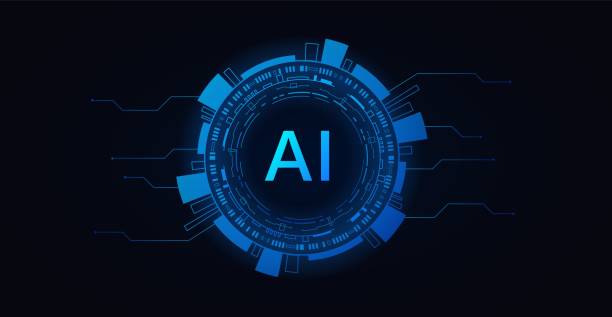
Natural Language Processing: Understanding and Generating Human Language by Machines
Natural Language Processing (Natural Language Processing) (NLP) is a sub-branch of artificial intelligence that enables systems to understand and generate human language.
The main goal of NLP is to create systems that can communicate with humans naturally and effectively.
NLP includes a set of techniques and algorithms used for analyzing and processing human language.
These techniques include syntactic analysis, semantic analysis, named entity recognition, and text generation.
Syntactic Analysis deals with the structure of sentences and the relationships between words.
This analysis helps the system understand the role of each word in a sentence and analyze the overall sentence structure.
Semantic Analysis deals with the meaning of words and sentences.
This analysis helps the system understand the overall meaning of the sentence and identify relationships between different concepts.
Named Entity Recognition deals with identifying and categorizing named entities such as names of people, organizations, and locations.
This technique helps the system identify important information in the text and categorize it correctly.
Text Generation deals with generating new texts using language patterns and rules.
This technique helps the system generate texts that are grammatically correct and semantically relevant.
NLP in various fields, including machine translation, chatbots, sentiment analysis, and information retrieval.
With technological advancements, NLP is expected to play a more significant role in human-machine communication.
Artificial intelligence plays a crucial role here.
By using NLP and other techniques, machines can better understand human language and respond to our needs.
Computer Vision: How Computers See the World?

Computer Vision: How Computers See the World?
Computer Vision (Computer Vision) is another important sub-branch of artificial intelligence that enables systems to understand and interpret images and videos.
The main goal of computer vision is to create systems that can see and understand the world around them like humans.
Computer vision includes a set of techniques and algorithms used for processing and analyzing images and videos.
These techniques include object detection, face detection, motion detection, and 3D reconstruction.
Object Detection deals with identifying and locating objects in images and videos.
This technique helps the system identify different objects in the image and determine their positions.
Face Detection deals with identifying and locating faces in images and videos.
This technique helps the system identify people’s faces in the image and extract relevant information about them.
Motion Detection deals with identifying and tracking the movement of objects in videos.
This technique helps the system identify changes in the scene and track the movement of objects.
3D Reconstruction deals with creating 3D models of objects and scenes using images and videos.
This technique helps the system understand the depth and shape of objects and create 3D models of them.
Computer vision has applications in various fields, including self-driving cars, security systems, medical diagnosis, and robotics.
With technological advancements, computer vision is expected to play a more significant role in human-machine interaction.
The role of artificial intelligence in this field is very important because complex algorithms and neural networks help systems analyze and interpret images and videos more accurately.
Robotics and Artificial Intelligence: Collaboration for Creating Smart Machines
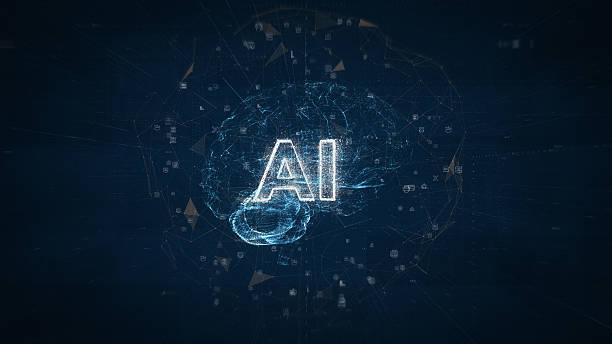
Robotics and Artificial Intelligence: Collaboration for Creating Smart Machines
Robotics and artificial intelligence are two related fields that, by collaborating, can create intelligent machines capable of performing complex and diverse tasks.
Robotics deals with the design, construction, operation, and application of robots, while artificial intelligence deals with creating systems capable of performing tasks that typically require human intelligence.
When artificial intelligence is combined with robotics, robots become capable of performing tasks beyond simple and repetitive ones.
AI-powered robots can understand their surroundings, make decisions, and act autonomously.
Applications of Robotics and Artificial Intelligence
- Industry AI-powered industrial robots can perform complex manufacturing tasks with higher accuracy and speed.
- Medicine AI-powered surgical robots can perform complex surgeries with higher precision and reduce the risk of human errors.
- Services AI-powered service robots can assist humans in various fields such as customer services, cleaning, and transportation.
- Exploration AI-powered explorer robots can explore dangerous and inaccessible environments such as space and deep seas.
Generally, the combination of robotics and artificial intelligence can lead to the creation of intelligent machines capable of performing complex and diverse tasks and assisting humans in various fields.
The table below shows examples of robot use in various industries:
| Industry | Robot Applications |
|---|---|
| Automotive | Parts assembly, painting, welding |
| Electronics | Printed circuit board manufacturing, component testing |
| Food | Packaging, sorting, quality control |
| Pharmaceuticals | Drug production, packaging, quality control |
Challenges and Limitations of Artificial Intelligence: A Realistic Look

Challenges and Limitations of Artificial Intelligence: A Realistic Look
Despite its vast potential, artificial intelligence also faces numerous challenges and limitations that need to be addressed.
These challenges include technical, ethical, and social issues.
Technical Challenges
- Need for large data AI systems require a large volume of data for learning and proper functioning.
Collecting and processing this data can be time-consuming and costly. - Lack of transparency Some AI algorithms, such as deep neural networks, are very complex, and understanding how they make decisions is difficult.
This lack of transparency can lead to concerns about the reliability and accountability of these systems. - Vulnerability to attacks AI systems can be vulnerable to cyberattacks.
Malicious attacks can disrupt system performance or lead to unauthorized data access.
Ethical Challenges
- Bias AI systems can make biased decisions if their training data contains biases.
This bias can lead to discrimination in various areas such as employment, lending, and law enforcement. - Privacy AI systems often require the collection and processing of individuals’ personal information.
This can raise concerns about privacy and misuse of information. - Accountability If an AI system makes a mistake and causes damage, determining accountability is difficult.
This can lead to legal and regulatory challenges.
Social Challenges
- Job displacement AI can lead to job automation and unemployment.
This can raise concerns about the future of the labor market and the need for training in new skills. - Increased inequality AI can lead to increased economic and social inequality.
Individuals who have access to AI technologies can benefit from them, while those who do not may fall behind.
To address these challenges and limitations, more research on AI needs to be conducted, and appropriate laws and regulations for using this technology need to be formulated.
Furthermore, society needs to be informed about the risks and benefits of AI and prepared for the changes resulting from this technology.
Artificial intelligence requires attention to ethical and social aspects to be used for the benefit of all members of society.
Do you dream of a thriving online store but don’t know where to start?
Rasaweb is your comprehensive e-commerce website design solution.
✅ Attractive and user-friendly design
✅ Increased sales and revenue⚡ Get free consultation
The Future of Artificial Intelligence: What Can We Expect?
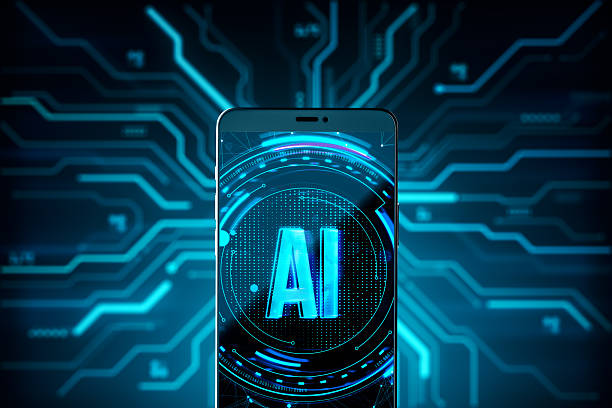
The Future of Artificial Intelligence: What Can We Expect?
The future of artificial intelligence is very bright and full of potential.
With technological advancements, AI is expected to play a more significant role in our lives and help us in various fields.
Some of the expectations we can have from the future of AI include:
- Advancements in various fields AI can bring about significant advancements in various fields such as medicine, transportation, manufacturing, services, and education.
- Increased automation AI can lead to greater job automation.
This can increase productivity and reduce costs but requires attention to issues related to unemployment and the need for training in new skills. - Better decision-making AI can help us make better decisions.
Intelligent systems can analyze data and identify patterns to help us make more informed decisions. - Improved communication AI can improve communication between humans and machines.
Chatbots and voice assistants can help us perform various tasks and make access to information easier. - Solving complex problems AI can help us solve complex problems.
Intelligent systems can model complex problems and find optimal solutions for them.
Of course, it should be noted that the future of artificial intelligence also comes with challenges and risks.
To address these challenges, more research on AI needs to be conducted, and appropriate laws and regulations for using this technology need to be formulated.
Furthermore, society needs to be informed about the risks and benefits of AI and prepared for the changes resulting from this technology.
Artificial intelligence can improve our lives, but it requires careful management and supervision.
How to Learn AI? Resources and Learning Strategies

How to Learn AI? Resources and Learning Strategies
Learning artificial intelligence can be an exciting and challenging journey.
Given the rapid growth of this field, there are numerous resources and strategies for learning AI.
Here are some of these resources and strategies:
- Online courses
Online learning platforms such as Coursera, edX, Udacity, and Khan Academy offer a variety of courses in AI.
These courses are usually taught by prominent university professors and include theoretical and practical topics. - Books
Many books on artificial intelligence can help you learn this field.
Some famous books include “Artificial Intelligence: A Modern Approach” by Stuart Russell and Peter Norvig and “Deep Learning” by Ian Goodfellow, Yoshua Bengio, and Aaron Courville. - Blogs and articles
Many blogs and articles on artificial intelligence can introduce you to the latest developments and trends in this field.
Some famous blogs include Machine Learning Mastery, Towards Data Science, and Analytics Vidhya. - Practical projects
One of the best ways to learn AI is to undertake practical projects.
By doing practical projects, you can implement theoretical concepts in practice and strengthen your skills. - Online communities
There are many online communities in the field of artificial intelligence where you can join and connect with other enthusiasts.
These communities can help you solve problems, learn new concepts, and find job opportunities.
To start learning artificial intelligence, you can begin by learning basic concepts such as machine learning, natural language processing, and computer vision.
Then, you can move on to more advanced topics and strengthen your skills in specific areas.
Artificial intelligence is a vast field, so it is important to approach learning it with patience and use diverse resources.
Frequently Asked Questions
| Question | Answer |
|---|---|
| 1. What is Artificial Intelligence (AI)? | It is a branch of computer science aimed at creating machines capable of simulating human intelligence and performing tasks that require human thinking, such as learning, problem-solving, and decision-making. |
| 2. What are the main types of Artificial Intelligence? | They can be classified into Narrow AI, which focuses on a specific task; General AI, which possesses comprehensive human-like capabilities; and Super AI, which surpasses human intelligence. |
| 3. Mention some common applications of Artificial Intelligence in our daily lives. | These include voice assistants (such as Siri and Alexa), recommendation systems (such as Netflix and Amazon), self-driving cars, facial recognition systems, and spam filters. |
| 4. What is the difference between Artificial Intelligence and Machine Learning? | Artificial intelligence is the broader concept of creating intelligent machines, while machine learning is a subset of AI that focuses on enabling systems to learn from data without explicit programming. |
| 5. What is Deep Learning? | It is a subset of machine learning that uses multi-layered artificial neural networks (deep neural networks) to process data and discover complex patterns, used in image and speech recognition. |
| 6. What are the main benefits of Artificial Intelligence? | Improving efficiency and productivity, automating repetitive tasks, making better decisions based on big data analysis, and developing solutions for complex problems in fields such as medicine and science. |
| 7. What are the main challenges facing the development and deployment of Artificial Intelligence? | These include the need for vast amounts of high-quality data, privacy and security issues, bias in data and algorithms, and high development and maintenance costs. |
| 8. Does Artificial Intelligence raise ethical or social concerns? | Yes, it raises concerns related to privacy, algorithmic bias, job losses due to automation, accountability for errors made by intelligent systems, and the need for a regulatory framework. |
| 9. How can Artificial Intelligence affect the future of the job market? | It can lead to the automation of some routine jobs, but it will also create new jobs requiring advanced skills in developing, operating, and maintaining AI systems. |
| 10. What are some modern or promising technologies in the field of Artificial Intelligence? | These include advanced Natural Language Processing (NLP) (such as large language models like ChatGPT), computer vision, robotics, and Generative AI. |
And other services of Rasa Web Advertising Agency in the field of advertising
- Smart SEO: A professional solution for increasing sales with a focus on precise audience targeting.
- Smart Social Media: A novel service for increasing sales through custom programming.
- Smart UI/UX: Designed for businesses looking to increase website visits through precise audience targeting.
- Smart Digital Advertising: An effective tool for online growth by optimizing key pages.
- Smart UI/UX: Designed for businesses looking to increase click-through rates through an SEO-driven content strategy.
And more than a hundred other services in the field of internet advertising, advertising consultation, and organizational solutions
Internet Advertising | Advertising Strategy | Advertorials
References
What is Artificial Intelligence? Applications, Advantages and Disadvantages Applications of Artificial Intelligence What Will Be the Future of Artificial Intelligence? All About Artificial Intelligence
? With Rasaweb Afarin, your business soars powerfully in the digital world. From responsive website design to search engine optimization, we are by your side to ensure a powerful and lasting web presence.
📍 Tehran, Mirdamad Street, next to Bank Markazi, Southern Kazeroon Alley, Ramin Alley, No. 6



